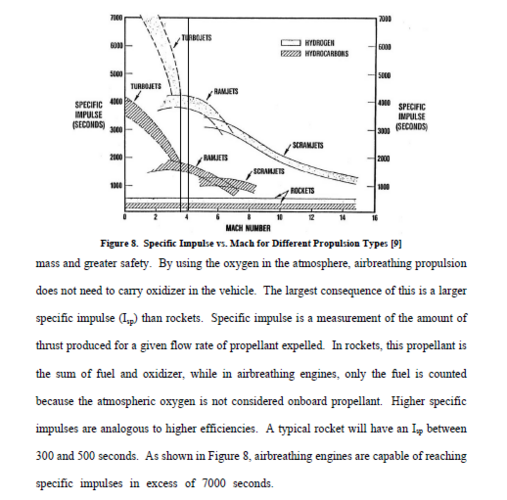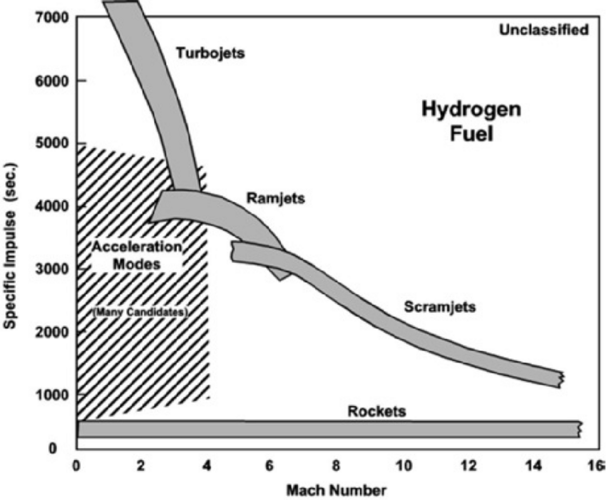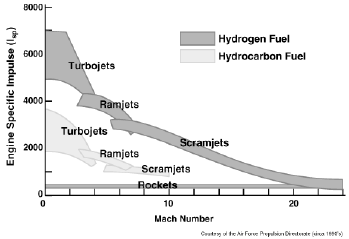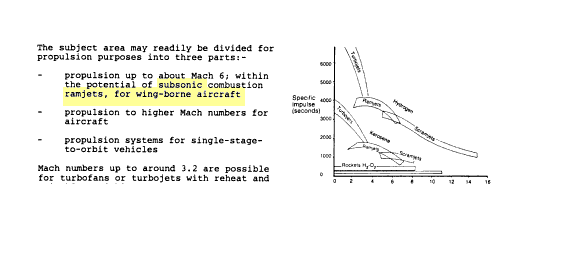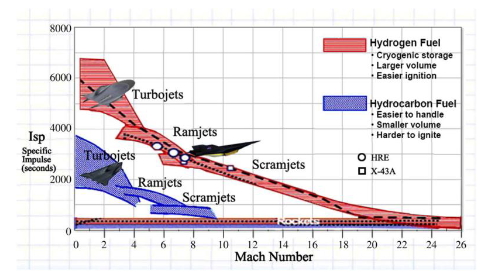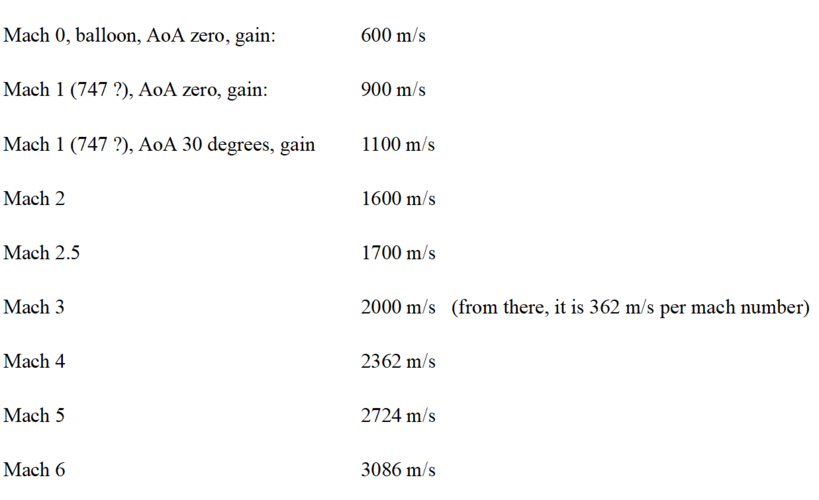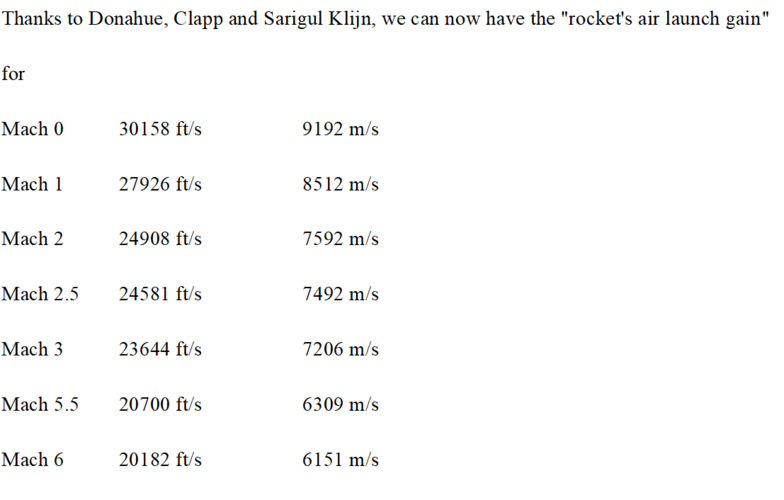Thanks for Ramon Chase documents. Very interesting. Particularly the 1991 paper. The usual consensus is that 100%-rocket-powered RLVs can't be winged and horizontal takeoff and landings, because rocket propellant is waaaaay too heavy. Notably the undercarriage. Ramon Chase however counter and destroy that argument, citing two notable examples. first is the B-58 undercarriage which was only 3% of its GLOW, with 1950 tech. Argument number 2 is Boeing RASV, although it needed a sled.
Note that Boeing RASV was the military offspring ( 1977-1982) of earlier NASA studies at Langley. They are available as Pdf at NTRS, and Chase actually briefly mentions them. It was called "Technology Requirements for Advanced Earth Orbital. Transportation Systems " and involved Boeing and Martin Marietta. it started in 1972 when Robert Salkeld and Len Cormier picked the curiosity of NASA Langley Gene Love which had his own pet concept, the "Continental/SemiGlobal Transport "
So in a nutshell
1971 Len Cormier Windjammer
1972 Gene Love CGST
1973 Robert Salkled "earth to orbit shuttle" studies
1975-1978 Boeing / Martin Marietta / Langley studies
1976-1983 Boeing RASV
Where it is extremely interesting is that Robert Salkeld, at some point, introduced rocket-powered HTOHL designs but they were so heavy, he proposed two solutions. Option 1 was the sled and led to the RASV. Option 2 was subsonic refueling, 20 years before Mitchell Burnside Clapp. Option 2 started with Salkeld circa 1973 and then found its way across the Langley studies.
And it was rejected.
Why ?
Because SSME - and once again, the disastrous influence of the very flawed Space Shuttle.
RASV was powered by a pair of SSMEs (and incidentally, back in 1971 Cormier Windjammer had SSME ancestors, ISINGLASS XLR-129). those engines are hugely powerful and swallow colossal amounts of deep cryogens - LOX and LH2. Plus the later abysmal density.
And on top, another pernicious influence of the Shuttle was a requirement for a 65 000 pounds payload - for the Langley studies. This was dropped by the military for the RASV.
All this ruined any hope for subsonic refueling: as rightly noted in the Langley studies, a colossal, expensive and dangerous tanker aircraft would be needed.
By contrast, note that when Clapp "reinvented" subsonic refueling 15 years later (1978 - 1993) the Black Horse was
- non deep cryogen, keroxide instead
- no SSME huge power
- extremely light and small, no bigger than a F-16
- screw any Shuttle legacy - no SSMEs, no 65 000 pounds payload.
This made the tanker shrinks from a monster cryogen carrier to a merely modified KC-135Q of SR-71 fame.
Also note that the RASV was related to Bernard Schriever SAMSO and maybe to Safeguard, because they mentionned Grand Forks AFB and "B-52 -like ground ops". But with SSME and deep cryogens ? no way.
I have a sneaking suspicion Clapp knew of RASV through his USAF background and also through the 80's TAV studies - across the 90's Black Horse is repeatedly called TAV.
There are probably many indirect but very real legacies between RASV and Black Horse. I think their aerodynamic shapes, for a start, were identical. Plus Boeing pushed RASV again in the early 90's for DC-X / DC-Y / X-33 (from memory).
Chase 1991 paper counter-intuitively shows that a rocket-powered HTOHL vehicle, far from being a five-legged-sheep, would actually have some intriguing advantages. Look at the scores at the end of the paper: at 25, it win the day ! And just like Clapp two years later, Chase uses a very real piece of metal as basis for its claim: that bit of RASV structural test article.
So thanks for the "Chase tip" Martin Bayer. While SOR might not be the definitive end of it, at least we agree on one thing: rocket powered HTOHL, if a trick can be found to get it off the ground (bimese or TSTO or sled, subsonic or suborbital refueling or maglev or something else) is well worth the effort.
Note that Boeing RASV was the military offspring ( 1977-1982) of earlier NASA studies at Langley. They are available as Pdf at NTRS, and Chase actually briefly mentions them. It was called "Technology Requirements for Advanced Earth Orbital. Transportation Systems " and involved Boeing and Martin Marietta. it started in 1972 when Robert Salkeld and Len Cormier picked the curiosity of NASA Langley Gene Love which had his own pet concept, the "Continental/SemiGlobal Transport "
So in a nutshell
1971 Len Cormier Windjammer
1972 Gene Love CGST
1973 Robert Salkled "earth to orbit shuttle" studies
1975-1978 Boeing / Martin Marietta / Langley studies
1976-1983 Boeing RASV
Where it is extremely interesting is that Robert Salkeld, at some point, introduced rocket-powered HTOHL designs but they were so heavy, he proposed two solutions. Option 1 was the sled and led to the RASV. Option 2 was subsonic refueling, 20 years before Mitchell Burnside Clapp. Option 2 started with Salkeld circa 1973 and then found its way across the Langley studies.
And it was rejected.
Why ?
Because SSME - and once again, the disastrous influence of the very flawed Space Shuttle.
RASV was powered by a pair of SSMEs (and incidentally, back in 1971 Cormier Windjammer had SSME ancestors, ISINGLASS XLR-129). those engines are hugely powerful and swallow colossal amounts of deep cryogens - LOX and LH2. Plus the later abysmal density.
And on top, another pernicious influence of the Shuttle was a requirement for a 65 000 pounds payload - for the Langley studies. This was dropped by the military for the RASV.
All this ruined any hope for subsonic refueling: as rightly noted in the Langley studies, a colossal, expensive and dangerous tanker aircraft would be needed.
By contrast, note that when Clapp "reinvented" subsonic refueling 15 years later (1978 - 1993) the Black Horse was
- non deep cryogen, keroxide instead
- no SSME huge power
- extremely light and small, no bigger than a F-16
- screw any Shuttle legacy - no SSMEs, no 65 000 pounds payload.
This made the tanker shrinks from a monster cryogen carrier to a merely modified KC-135Q of SR-71 fame.
Also note that the RASV was related to Bernard Schriever SAMSO and maybe to Safeguard, because they mentionned Grand Forks AFB and "B-52 -like ground ops". But with SSME and deep cryogens ? no way.
I have a sneaking suspicion Clapp knew of RASV through his USAF background and also through the 80's TAV studies - across the 90's Black Horse is repeatedly called TAV.
There are probably many indirect but very real legacies between RASV and Black Horse. I think their aerodynamic shapes, for a start, were identical. Plus Boeing pushed RASV again in the early 90's for DC-X / DC-Y / X-33 (from memory).
Chase 1991 paper counter-intuitively shows that a rocket-powered HTOHL vehicle, far from being a five-legged-sheep, would actually have some intriguing advantages. Look at the scores at the end of the paper: at 25, it win the day ! And just like Clapp two years later, Chase uses a very real piece of metal as basis for its claim: that bit of RASV structural test article.
So thanks for the "Chase tip" Martin Bayer. While SOR might not be the definitive end of it, at least we agree on one thing: rocket powered HTOHL, if a trick can be found to get it off the ground (bimese or TSTO or sled, subsonic or suborbital refueling or maglev or something else) is well worth the effort.
Last edited:

